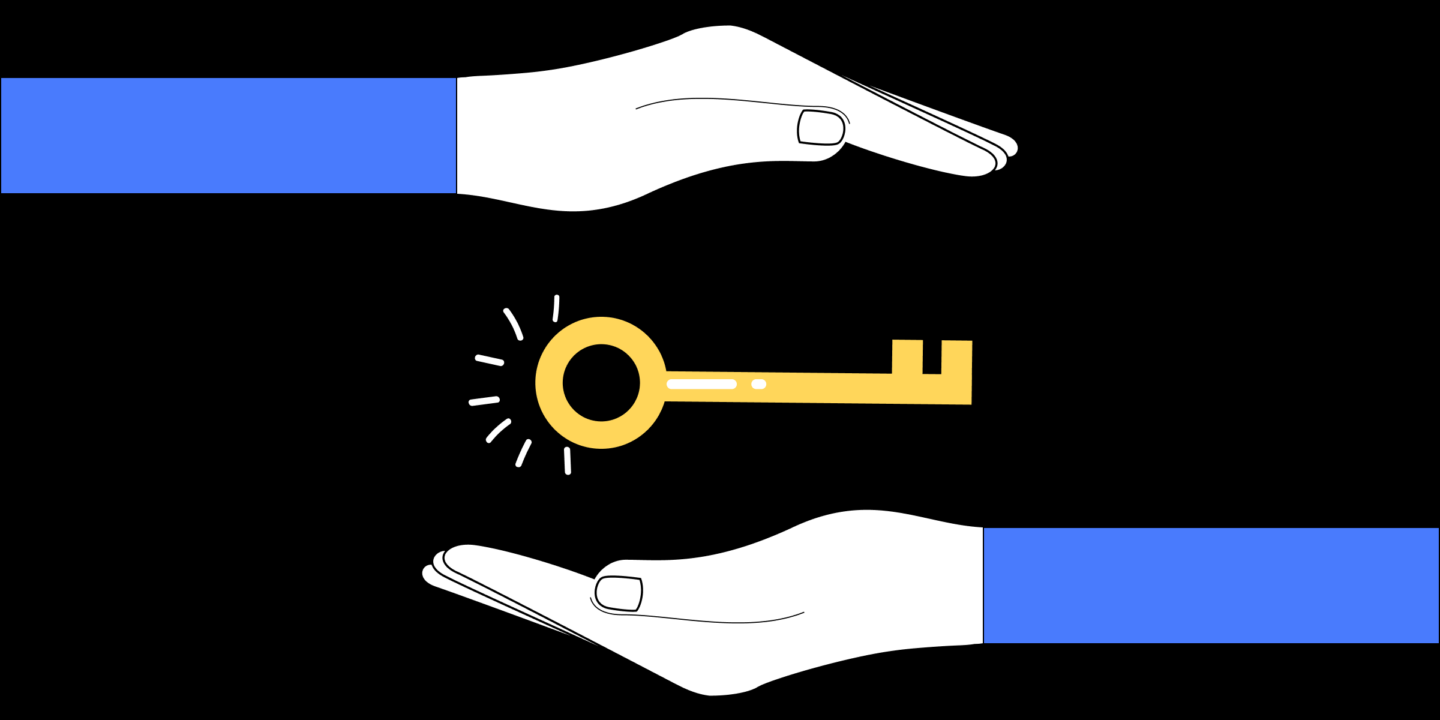
If you are a working professional, you know it’s challenging to balance your career, social life, and personal life. Similarly, blockchain networks find it difficult to balance security, scalability, and decentralization optimally. It’s especially true for Proof of Stake (PoS) based blockchain protocols. The underlying design of PoS enhances the scalability part but leaves behind decentralization. Hence, Delegated Proof of Stake (DPoS) came into the picture, which tries to solve the shortcomings of the PoS system.
In this article, we will ponder the different components of the DPoS algorithm and its working mechanism in detail.
P.S. Looking to invest in cryptocurrencies? Download Mudrex and get started with Coin Sets!
What Is a Delegated Proof of Stake (DPoS)?
Delegated Proof of Stake (DPoS) is a well-known consensus mechanism.
So, what is a consensus mechanism?
A consensus mechanism is a set of standards used by blockchain networks to safeguard the network from bad actors. The consensus mechanism is also referred to as the consensus protocol or consensus algorithm. It helps verify transactions and maintain network security. It influences the network speed, transaction fees, energy consumption, etc., of the underlying blockchain.
There are different types of consensus mechanisms, and Delegated Proof of Stake (DPoS) is a pretty famous one. It is an evolution of the Proof of Stake (PoS) system. Daniel Larimer ideated the concept of DPoS in 2013. The first iteration of DPoS was implemented in 2015 on a blockchain network called BitShares.
DPoS is almost like the PoS mechanism, with subtle differences. Both need users to lock their cryptos as a ‘stake’ in the network. Staking indicates that these users are willing to take ownership in safeguarding network integrity.
PoS selects the validator nodes based on certain factors. It includes the number of coins staked, staking time, randomization, etc.
But DPoS follows a different approach to provide the validation rights. It uses a voting mechanism to ensure a democratic selection. DPoS allows users to vote and elect ‘witnesses’ to secure the network on their behalf. These witnesses are selected based on their trustworthiness and reputation. There are other stakeholders, like Delegates and Block validators in the DPoS system, whom we will discuss in this article.
How Does DPoS Function?
DPoS is designed to solve the critical limitations that hinder the earlier systems like PoW and PoS.
DPoS comprises different components that enable the algorithm to validate the transaction effectively and efficiently.
Let’s explore each of these components in a detailed manner.
1. Voting mechanism
DPoS conducts a voting process to select nodes to verify blocks. These nodes are voted primarily based on their reputation. Every user who stakes at least one coin with the DPoS-powered network can directly vote for the nodes. Some DPoS blockchains allow users to provide their voting power to someone else to vote on their behalf.
The voting process is continuous and happens in a fixed timeframe depending on the blockchain network.
2. Witnesses
The witnesses are nodes that validate transactions and create blocks. These nodes are selected through the voting system. When all transactions in a single block are verified, the respective witnesses receive a reward. This reward can be shared with every user who voted for that witness.
On the other hand, if the witness doesn’t validate every transaction within the stipulated time, they will not receive a reward. Typically, the compensation for a failed witness is allocated to the next witness if they verify all transactions successfully.
The number of witnesses in a DPoS system falls only between 20 and 100. Hence, there can be stiff competition for this role.
To summarize, witnesses are responsible for validating transactions and securing the underlying network. One doesn’t need to lock cryptocurrencies to become a witness. They can be voted based on their reputation. Also, they can be kicked out at any time in case of poor performance or malicious activities.
3. Delegates
Delegates are another set of stakeholders within the DPoS system. The users vote for the delegates to oversee governance within the blockchain. Delegates can propose suggestions like changing the number of witnesses, altering the size of a single block, etc. The users then vote on these suggestions and pick the one with the highest vote count.
4. Validators
The last set of stakeholders includes the validators. These are blockchain nodes that validate blocks created by the witnesses. They ensure that the witnesses follow the rules of the consensus mechanism.
Unlike witnesses, validators are not financially incentivized.
Advantages and Disadvantages of DPoS
Advantages
1. Minimal hardware requirement
Unlike the PoW protocol, the DPoS doesn’t need expensive hardware. Blockchains with DPoS protocols require users simply to stake coins to participate.
2. Democratic system
DPoS allows users to vote and elect witnesses and delegates to handle the network. They are selected based on their level of reliability and reputation. This approach is opposite to how PoS operates. Users with more staked coins have better odds of securing the validation rights.
3. Transaction time
The transaction time refers to the time taken to process the network transaction. PoS is known for its quick transaction time, but DPoS takes even lesser time than PoS.
DPoS protocol typically requires only 20 to 100 witnesses to handle the network. A limited number of witnesses can quickly reach a consensus compared to algorithms like PoW and PoS.
For instance, TRON is one of the many popular networks using the DPoS mechanism. Its transaction time is around one minute. Let’s look into the USD Coin, which uses a PoS system. Its transaction time is around five minutes.
4. Accountability
The users vote for people with impressive track records. Also, these selected candidates can be voted out of the system at any point in case of malicious behavior. For example, there is scope for forming delegate cartels through which the delegates can allocate validation power to selected witnesses.
Hence, the voting process helps ensure accountability among them, and they are made to act honestly to be retained.
Disadvantages
1. Security
DPoS has the risk of facing a 51% attack as it has only fewer stakeholders to manage the network. They can organize among themselves to perform these attacks.
2. Need for engagement
DPoS demands that network users take part in the voting process to run the blockchain. Hence, these users must remain active and be involved in the process. Otherwise, the network will fail to function correctly.
3. Scope for centralization
The level of decentralization should be measured on a scale rather than viewing it in the form of black and white.
Compared to PoS, DPoS improves the level of decentralization within the network. But there is still scope for centralization.
Without a doubt, DPoS doesn’t intently favor a particular set of users (like PoS). However, as it requires fewer delegates to manage the network, the question of whether it genuinely is decentralized arises.
How is DPoS different from PoS?
Below is the breakdown of where both the systems vary and coincide.
| Parameters | Proof of Stake(PoS) | Delegated Proof of Stake (DPoS) |
| Year of Implementation | 2012 | 2015 |
| Staking Mechanism | Yes | Yes |
| Voting Process | No | Yes |
| Stakeholders | Validators | Witnesses, block validators and delegates |
| Selection Process | Randomization | Reputation-based |
| Hardware Requirement | No | No |
| Merits | Scalable, secure, sustainable, and environment-friendly | Scalable, democratic system, sustainable and environment-friendly |
| Risks | Scope for centralization | Scope for centralization and security risk |
| Examples | Ethereum (ETH), Cardano (ADA), and Tezos (XTC) | Cosmos (ATOM), TRON (TRX), and EOS (EOS) |
Blockchains Using DPoS Consensus: Examples
Many blockchain networks use the DPoS algorithm considering its merits.
Below is a list of well-known examples.
1. Cosmos
In Cosmos, the witnesses are called ‘Validators.’ There are 100 validators assigned to verify network transactions. Cosmos plans to increase the validator count to 300. The idea behind this move is to decentralize its network further.
2. TRON
After staking coins, each user can vote for five candidates per election. The top 27 candidates will be elected to perform their duty. They are also called ‘Super Representatives,’ and these elections occur every 24 hours.
3. EOS
In the EOS network, each user can vote for up to 30 candidates, and the top 21 are selected. An election takes place every two minutes and six seconds.
Conclusion
DPoS is an innovative alternative to traditional systems like PoW and PoS algorithms.
It uses less energy than PoW and consumes less time than PoS systems. But, it doesn’t mean that DPoS is the perfect consensus algorithm for all blockchain networks. Every algorithm, including DPoS, has its pros and cons.
But one thing is clear. DPoS will likely gain widespread adoption as it continues to evolve and stabilize over time.
FAQs
1. Is DPoS decentralized?
Decentralization has to be measured on a relative scale rather than viewing it as a black-and-white concept.
No consensus mechanism is entirely decentralized, as there is some scope for centralization exists. If we take DPoS, the level of decentralization is higher than in the PoS system. DPoS follows a voting process to offer validation rights. But, as it requires fewer delegates to manage the network, the question of whether it is fully decentralized arises.
2. Is TRON a DPoS?
Tron is a layer-1 blockchain platform you can use to build decentralized applications (DApps). It uses Delegated Proof of Stake (DPoS) consensus mechanism. DPoS enables users to vote for candidates to validate network transactions. These validators are called ‘Super Representatives’ and are chosen every six hours.
3. Is Ethereum delegated proof of stake?
No. Ethereum uses the Proof of Stake (PoS) protocol consensus mechanism. PoS is a well-known, energy-efficient alternative to the Proof of Work (PoW) introduced by Bitcoin.
Cosmos (ATOM), TRON (TRX), EOS (EOS), Steem (STEEM), and BitShares (BTS) are some of the well-known blockchain networks using the DPoS system.





